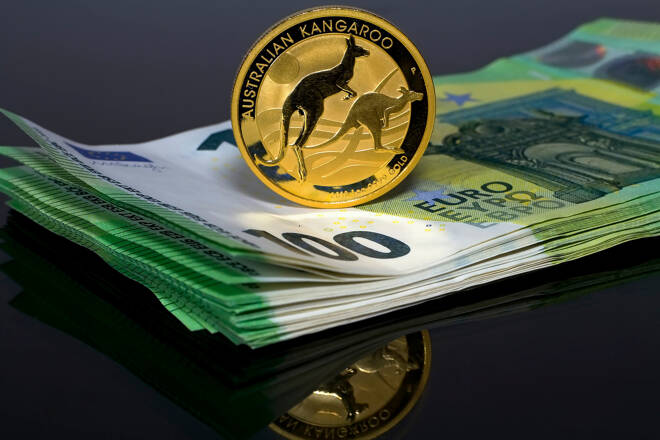Advertisement
Advertisement
AUD to USD Forecast: Bears Eye Sub-$0.67 on BoJ Tweak
By:
It is a busy day ahead for the AUD to USD. While Australian retail sales and PPI numbers will influence BoJ tweaks and hawkish Fed bets would weigh.
Highlights
- It will be another choppy session for the AUD/USD today.
- After the market reaction to the Q2 Australian inflation figures and BoJ tweak news, Australian wholesale inflation and retail sales numbers will influence.
- The near-term technical indicators turned bearish, signaling a return to $0.67 on hawkish Fed and BoJ bets.
On Thursday, the AUD/USD tumbled by 0.71% to end the day at $0.67090. The Fed Chair Powell speech delivered early support before US GDP numbers and BoJ tweak news sent the Aussie Dollar into the deep red.
This morning, prelim retail sales figures for June and producer price index numbers for Q2 will be in focus. While softer Australian inflation numbers raised bets on the RBA hitting the brakes, a spike in spending and sticky wholesale inflation numbers could refuel bets on an RBA rate hike.
The producer price index is a leading indicator for consumer price inflation. A more marked increase in the PPI would signal a pickup in inflationary pressure. Supply and demand are also drivers of inflation. A jump in retail sales could force the RBA to hike rates to curb spending and eliminate the demand effect on consumer price inflation.
The US Session
US Core PCE Price Index and personal spending numbers will be the stats to track. Fed Chair Powell left the door ajar for a September rate hike. A hotter-than-expected core PCE price index and personal spending would support a more hawkish Fed policy outlook.
The Core PCE Price Index is the Fed’s preferred inflation indicator. Sub-4% would likely shut the door on the Fed hawks. However, personal spending needs consideration, with a pickup in spending likely to drive consumer price inflation through demand.
AUD/USD Price Action
Daily Chart
The Daily Chart showed the AUD/USD slide through the $0.6729 – $0.6755 support band.
Significantly, the AUD/USD also fell through the 200-day ($0.67508) and 50-day ($0.67214) EMAs to send bearish near and longer-term price signals. Significantly, the 50-day EMA crossed through the 200-day EMA, affirming a near-term bullish trend reversal.
Looking at the 14-Daily RSI, the 47.31 reading signals a bearish trend and supports a return to sub-$0.67. However, a move through the $0.6729 – $0.6755 support band and the 200-day EMA ($0.67508) would bring the 50-day EMA ($0.67214) into view.
4-Hourly Chart
Looking at the 4-Hourly Chart, the AUD/USD sits below the $0.6729 – $0.6755 support band. The AUD/USD also remains below the 50-day ($0.67631) and 200-day ($0.67336) EMAs, sending bearish near and longer-term price signals.
Significantly, the 50-day EMA narrowed on the 200-day EMA, supporting a return to sub-$0.67. However, a move through the 200-day EMA ($0.67336) and the $0.6729 – $0.6755 support band would bring the 50-day EMA ($0.67631) into view.
Looking at the RSI indicator, the 14-4H RSI reading of 38.61 indicates bearish momentum, with selling pressure outweighing buying pressure. The RSI is aligned with the 50-day EMA, supporting a return to sub-$0.67.
About the Author
Bob Masonauthor
With over 28 years of experience in the financial industry, Bob has worked with various global rating agencies and multinational banks. Currently he is covering currencies, commodities, alternative asset classes and global equities, focusing mostly on European and Asian markets.
Advertisement
